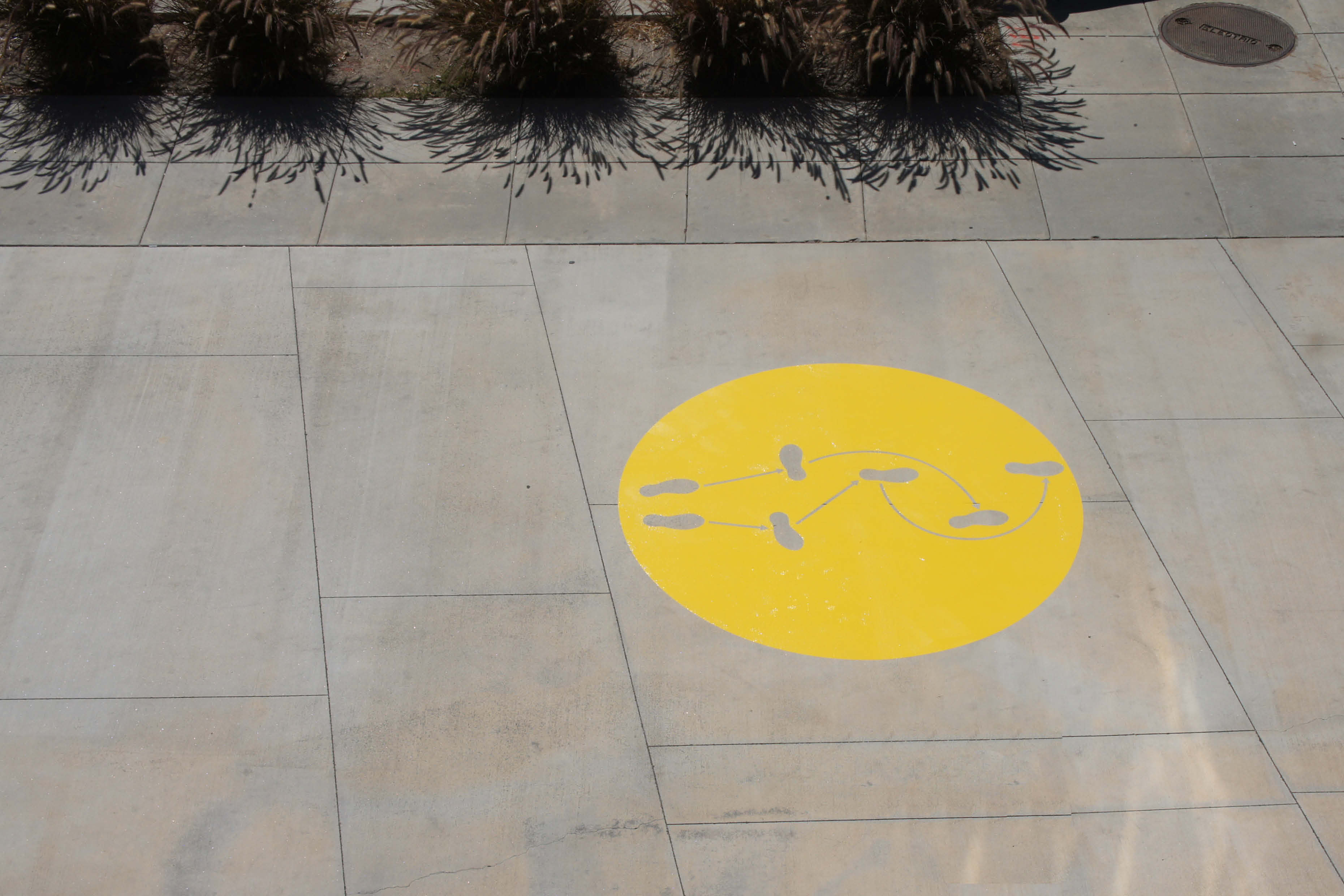
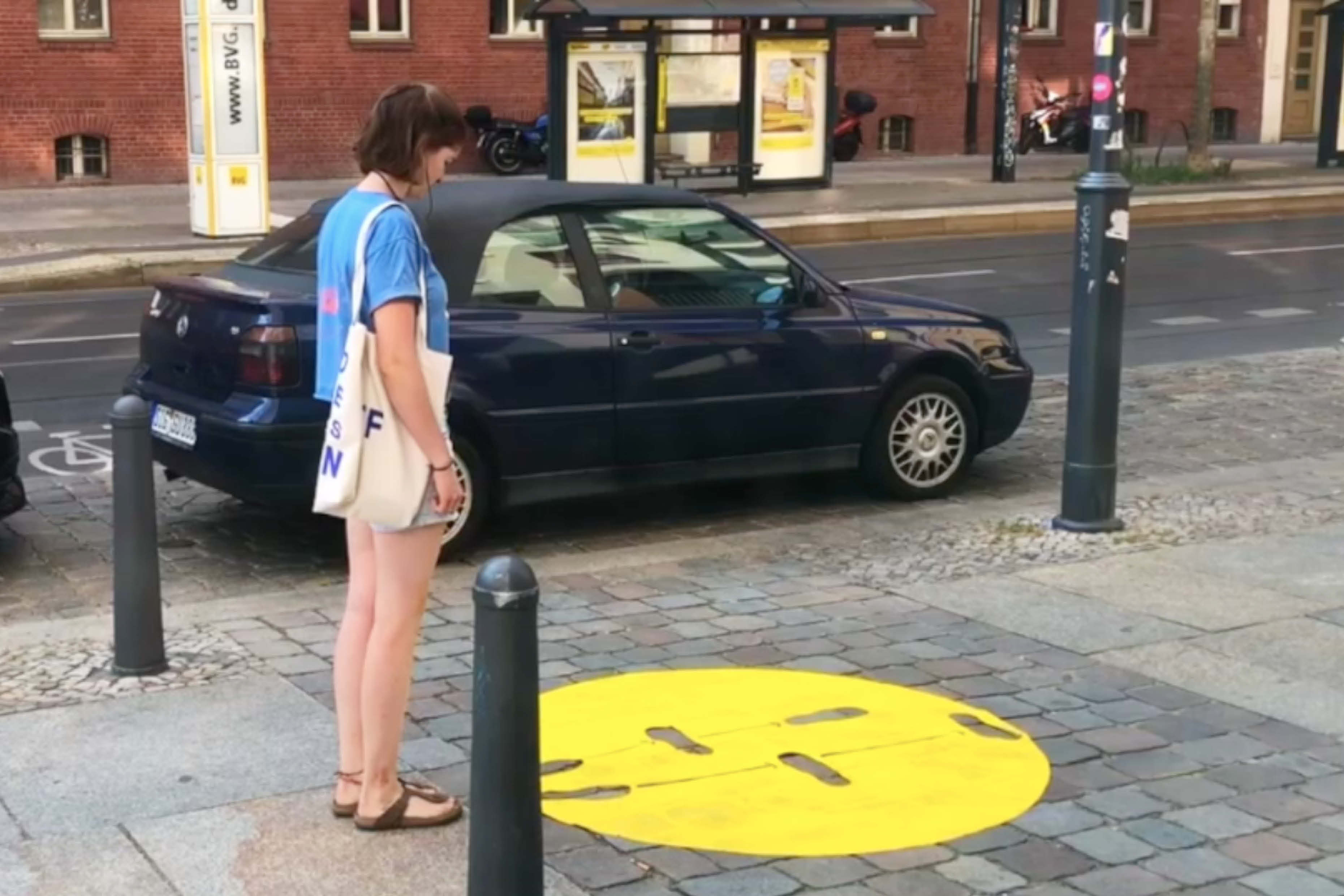
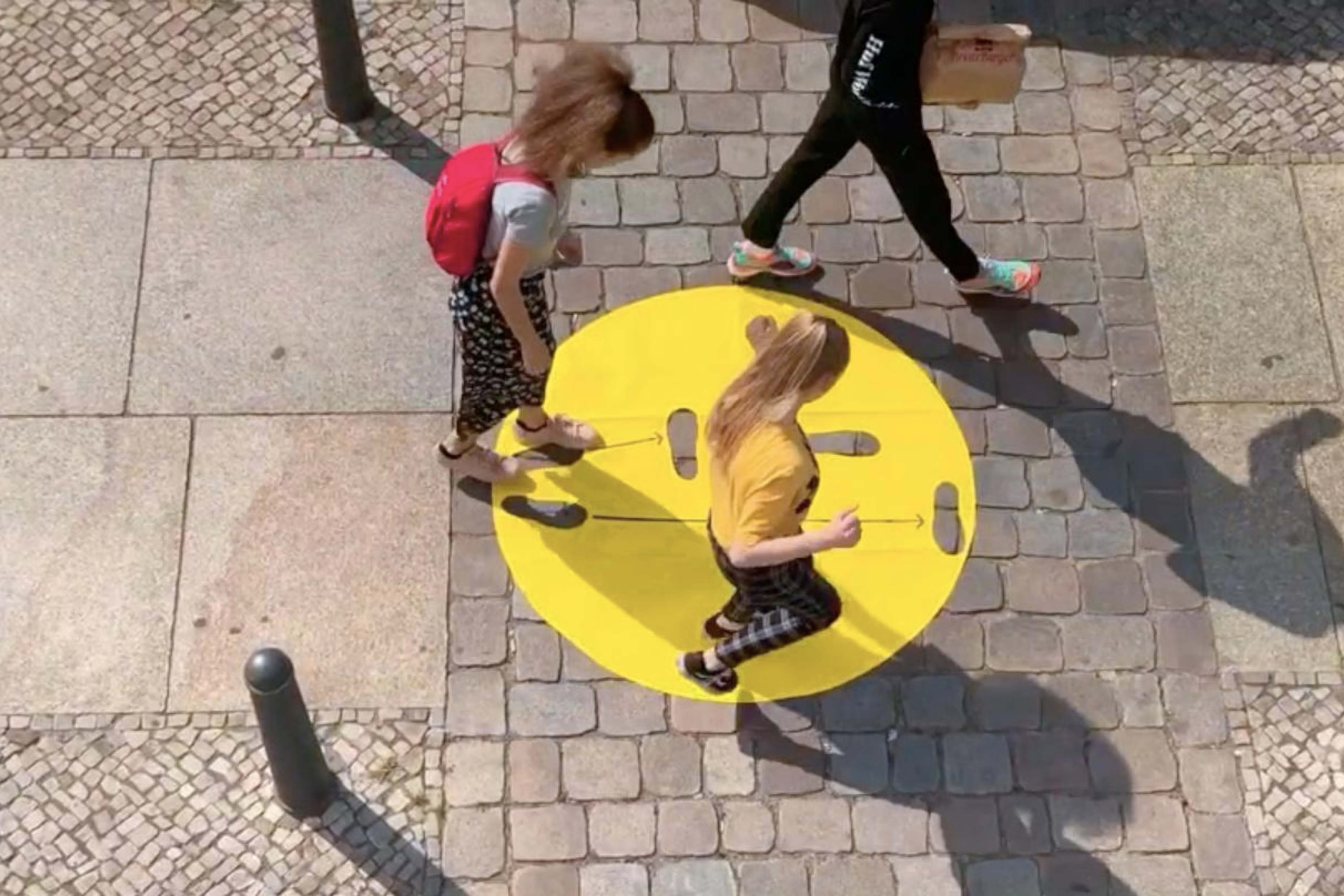
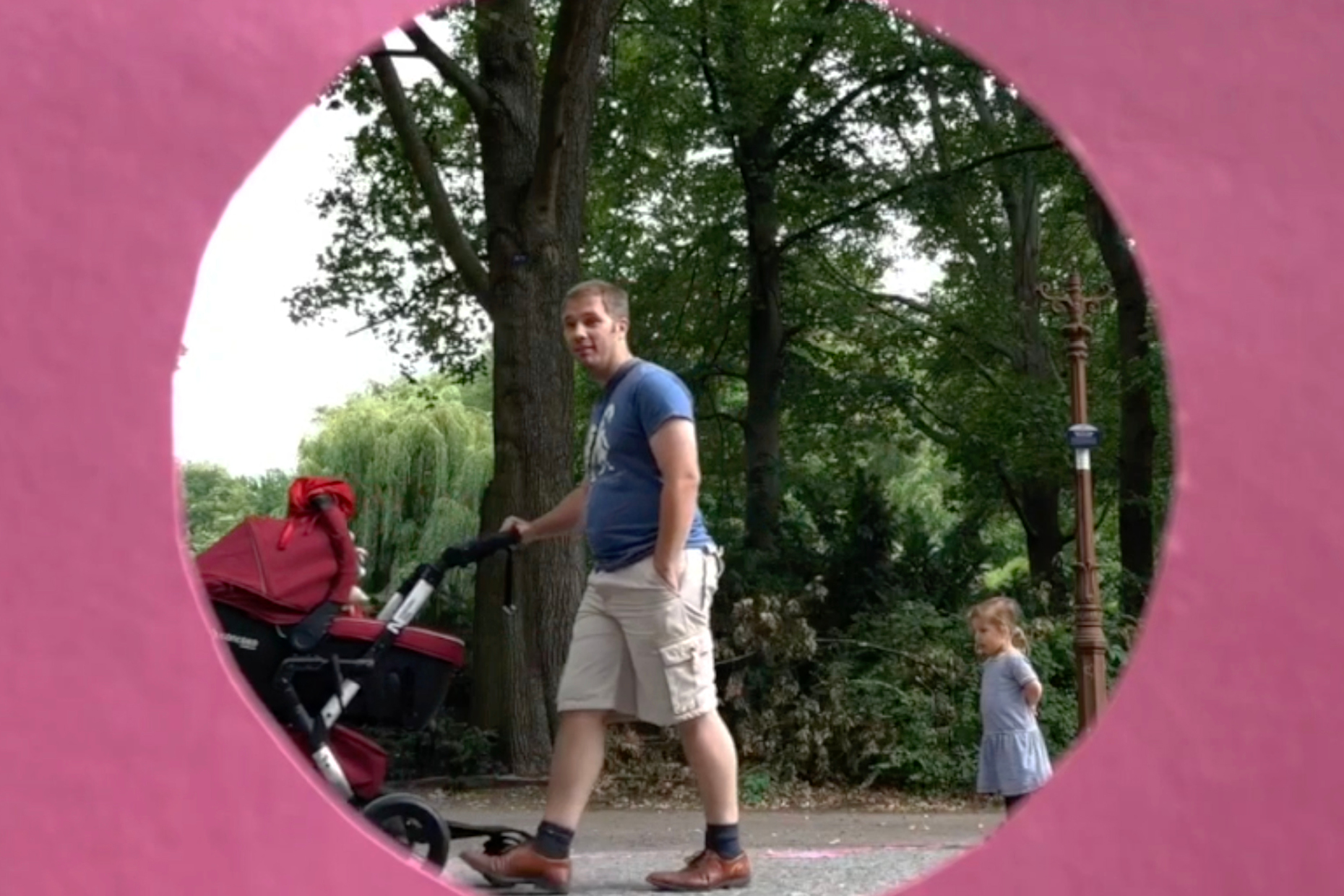
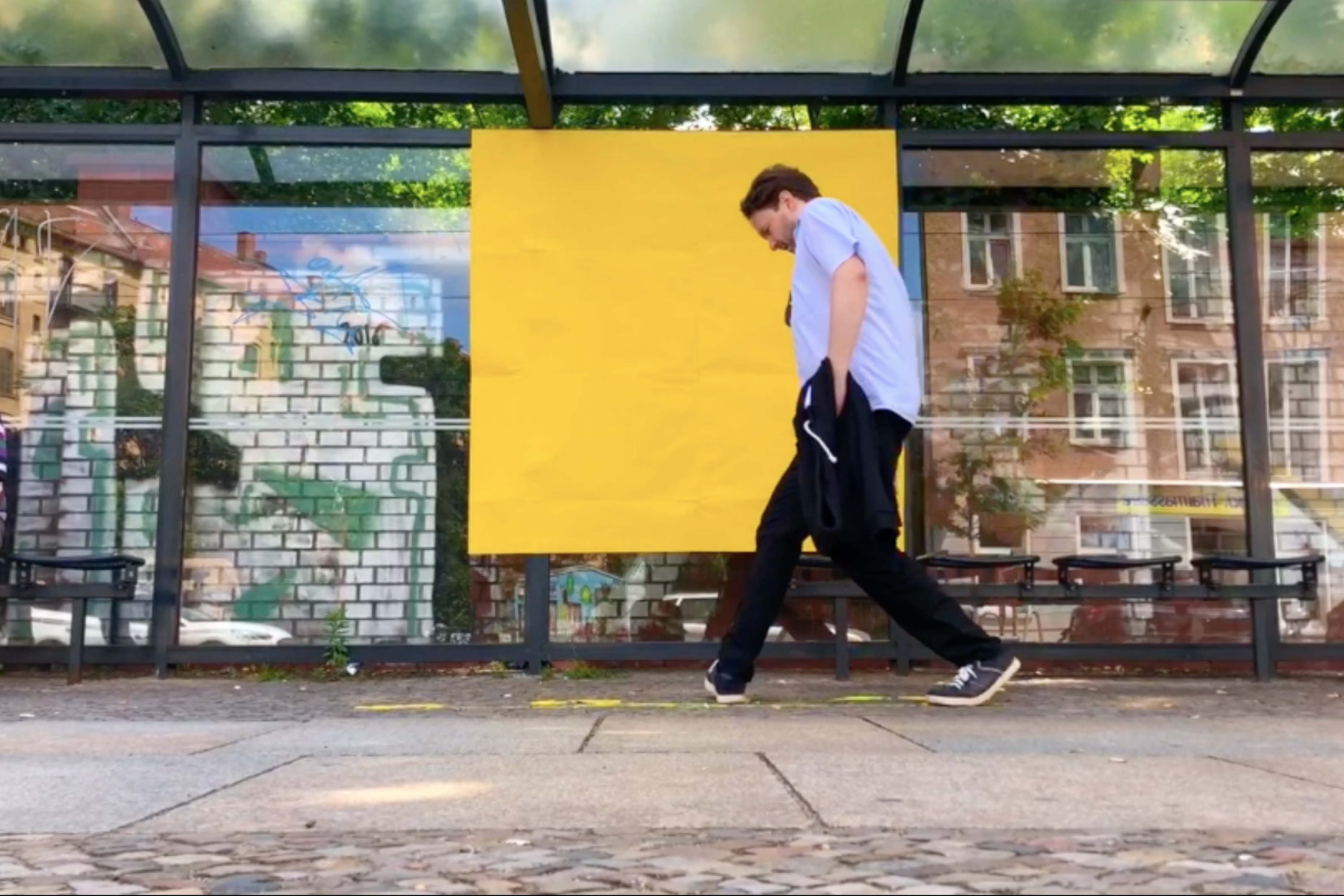
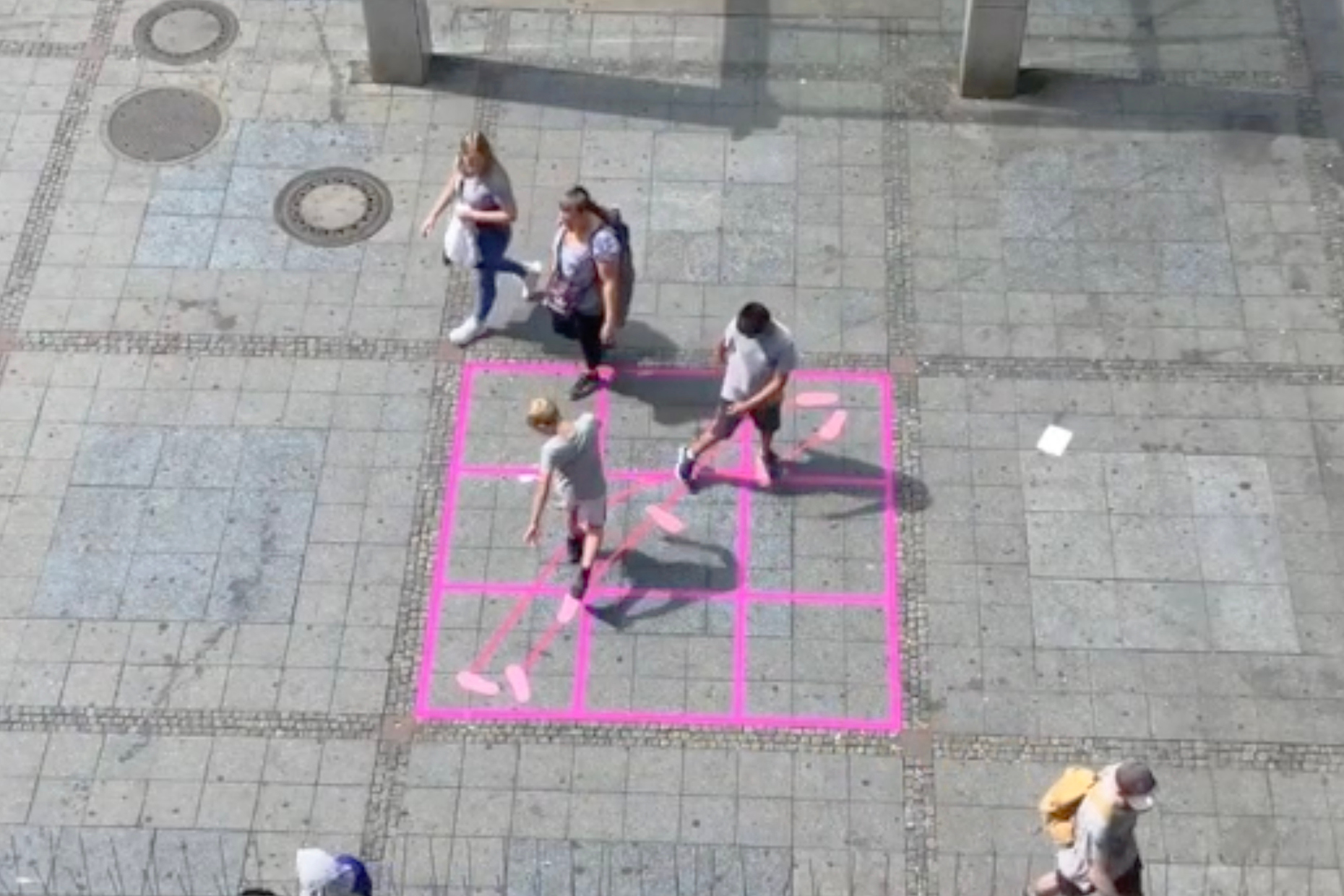
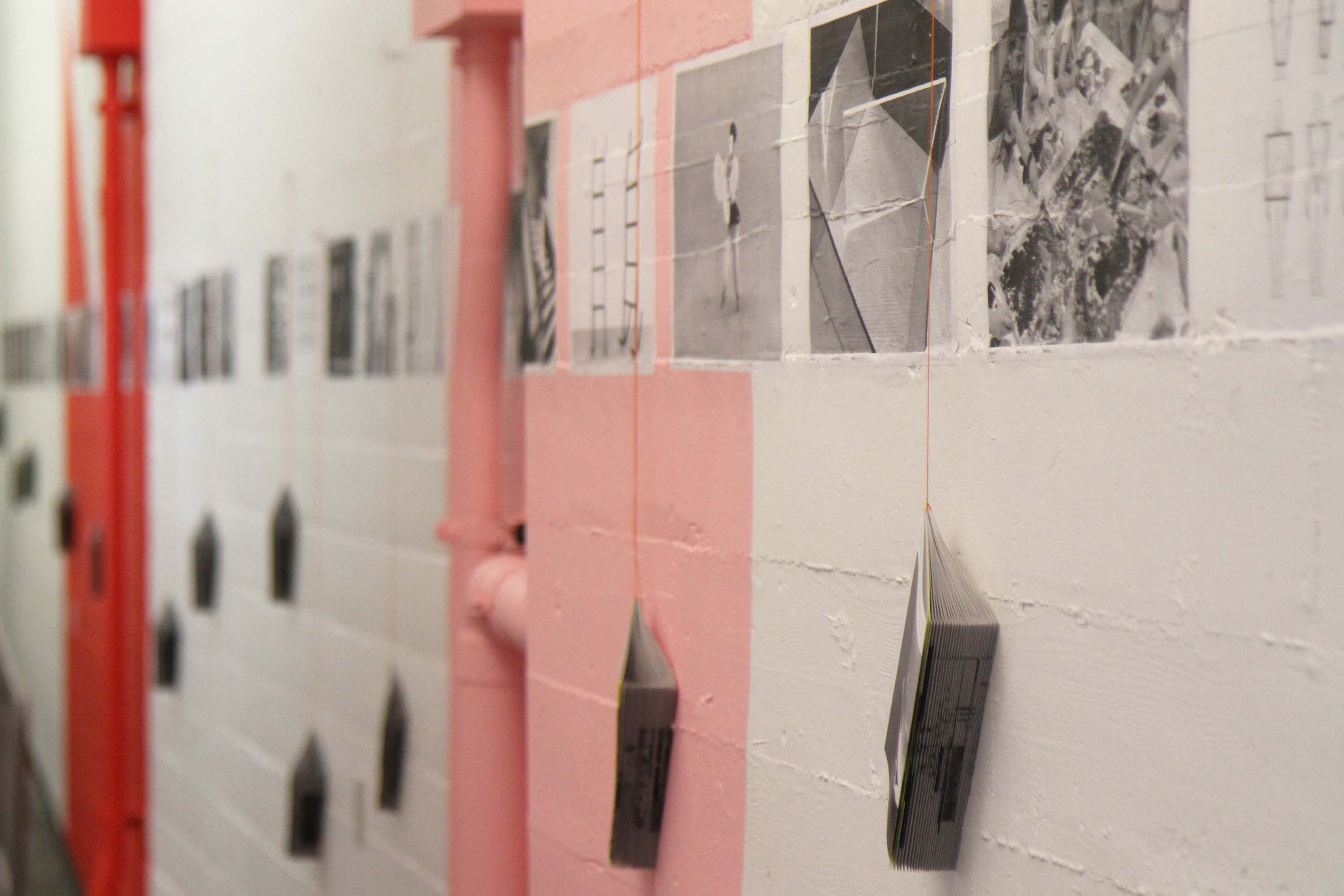
Performative Translation
(Video and Exhibition)
The Bauhaus has revolutionized dance and created new choreographic and performative formats. Oskar Schlemmer described his stage theory as translating the visual language of painting to the language of performance. Schlemmer’s theory raises questions on how to translate performances, and how to perform translation?
I translated choreography of Schlemmer’s work into diagrams and put them on the streets in Berlin. By doing this, I want to trigger changes in people’s gait, gesture, and movement; and in the meantime, to explore the answers of a question: what are the possibilities and impossibilities of translation? Nevertheless, translation is possible and impossible at the same time. If the “translatability” of the text is possible because of the intimate relationship between all languages, its impossibility lies in the difficulty to disclose that relationship. Movement is temporal. It disappears as it is performed. It only takes place at the moment in real-time with real people who bring themselves to the movement. Bauhaus Performance has been mostly treated as a minor historical footnote, while it actually, as I’ll argue, deserves to be more fully examined in the context of the twenty-first century; it reveals the surreal, sensual, irrational, and instinctive spirit of Bauhaus.
Featured in exhibition Plan B: Spirit of the Bauhaus hosted by The Hoffmitz Milken Center for Typography (HMCT) at ArtCenter
(Video and Exhibition)
The Bauhaus has revolutionized dance and created new choreographic and performative formats. Oskar Schlemmer described his stage theory as translating the visual language of painting to the language of performance. Schlemmer’s theory raises questions on how to translate performances, and how to perform translation?
I translated choreography of Schlemmer’s work into diagrams and put them on the streets in Berlin. By doing this, I want to trigger changes in people’s gait, gesture, and movement; and in the meantime, to explore the answers of a question: what are the possibilities and impossibilities of translation? Nevertheless, translation is possible and impossible at the same time. If the “translatability” of the text is possible because of the intimate relationship between all languages, its impossibility lies in the difficulty to disclose that relationship. Movement is temporal. It disappears as it is performed. It only takes place at the moment in real-time with real people who bring themselves to the movement. Bauhaus Performance has been mostly treated as a minor historical footnote, while it actually, as I’ll argue, deserves to be more fully examined in the context of the twenty-first century; it reveals the surreal, sensual, irrational, and instinctive spirit of Bauhaus.
Featured in exhibition Plan B: Spirit of the Bauhaus hosted by The Hoffmitz Milken Center for Typography (HMCT) at ArtCenter